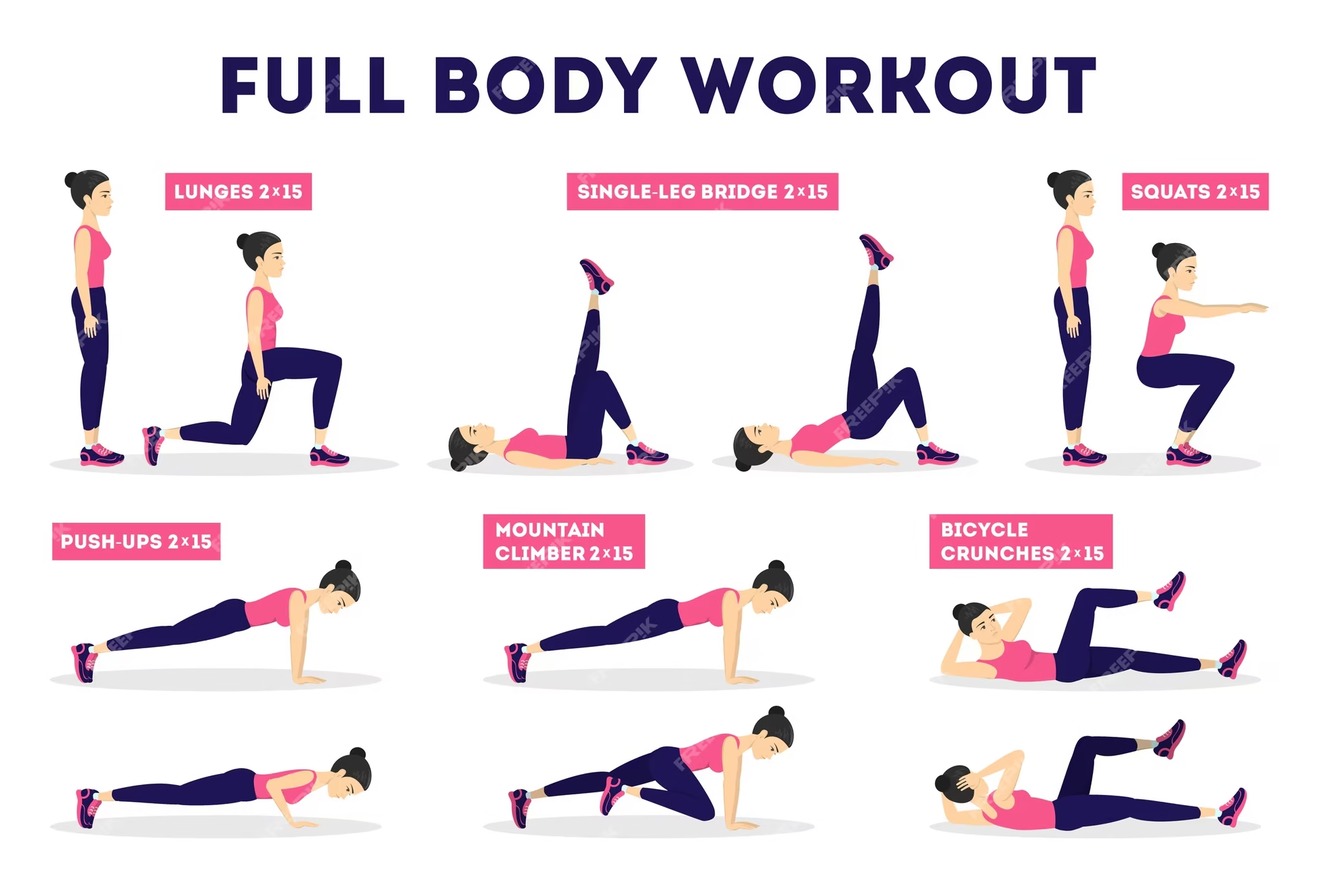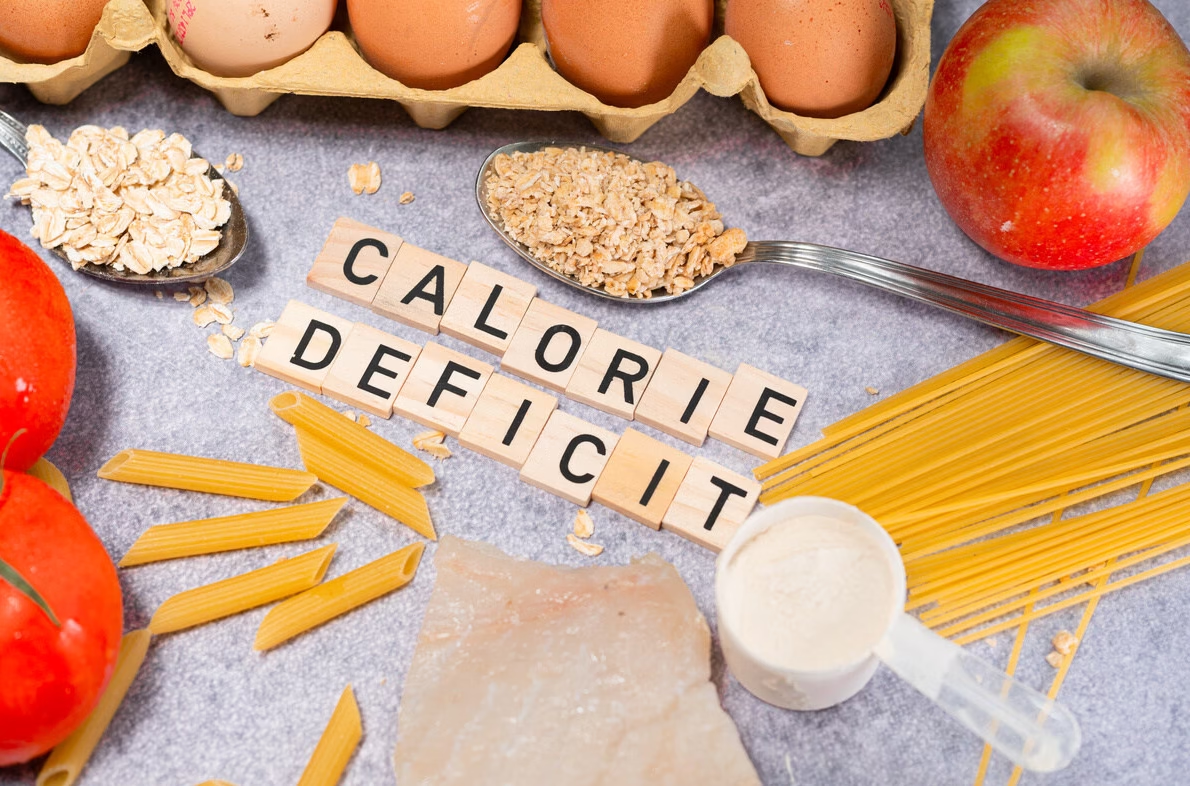Starting your fitness journey can feel overwhelming, especially with countless conflicting advice online. However, the right fitness tips for women can transform not just your body, but your entire life. Whether you’re a busy professional, a new mom, or someone looking to reclaim their health, understanding how your body responds to exercise and nutrition is crucial for success.
Women face unique physiological challenges and hormonal fluctuations that affect everything from metabolism to muscle building. This comprehensive guide provides evidence-based strategies tailored specifically for women’s bodies and lifestyles.
Understanding Women’s Unique Fitness Needs
Women’s bodies operate differently from men’s, requiring specialized approaches to exercise and nutrition. Hormonal cycles, pregnancy, menopause, and different muscle fiber distributions all influence how women should approach fitness. Understanding these differences is fundamental to developing effective fitness strategies.
Hormonal Considerations in Women’s Fitness
Your menstrual cycle significantly impacts energy levels, strength, and recovery. During the follicular phase (days 1-14), estrogen levels rise, making this an ideal time for high-intensity workouts and strength training. The luteal phase (days 15-28) brings higher progesterone levels, when your body benefits more from moderate exercise and longer recovery periods.
Estrogen helps protect bone density and supports muscle recovery, while progesterone can increase core body temperature and affect your perceived exertion during workouts. Working with your cycle rather than against it can dramatically improve your fitness results and reduce injury risk.
Quick Reference: Essential Fitness Tips for Women Overview
| Category | Key Tips | Frequency | Benefits |
|---|---|---|---|
| Strength Training | Compound movements, progressive overload | 2-3 times/week | Builds lean muscle, increases metabolism |
| Cardiovascular Exercise | Mix of HIIT and steady-state cardio | 3-5 times/week | Improves heart health, burns calories |
| Flexibility & Mobility | Dynamic warm-ups, static stretching | Daily | Prevents injury, improves performance |
| Nutrition | Balanced macros, adequate protein | Every meal | Fuels workouts, supports recovery |
| Rest & Recovery | 7-9 hours sleep, rest days | Daily/Weekly | Muscle repair, hormone regulation |
Understanding Women’s Unique Fitness Needs

Women’s bodies operate differently from men’s, requiring specialized approaches to exercise and nutrition. The following table outlines key physiological differences that impact fitness strategies.
Hormonal Considerations Table
| Menstrual Phase | Hormone Levels | Best Exercise Types | Energy Levels | Recovery Needs |
|---|---|---|---|---|
| Menstrual (Days 1-5) | Low estrogen/progesterone | Light cardio, yoga, walking | Low to moderate | Extra rest, gentle movement |
| Follicular (Days 1-13) | Rising estrogen | HIIT, strength training | High | Normal recovery |
| Ovulation (Day 14) | Peak estrogen | High-intensity workouts | Peak energy | Normal recovery |
| Luteal (Days 15-28) | High progesterone | Moderate cardio, strength | Variable | Longer recovery periods |
Macronutrient Balance for Women
Protein requirements for active women range from 1.2-2.0 grams per kilogram of body weight, depending on activity level and goals. Protein supports muscle recovery, maintains lean mass during weight loss, and provides satiety. Include protein sources at each meal: lean meats, fish, eggs, dairy, legumes, and plant-based options.
Carbohydrates fuel workouts and support recovery. Rather than avoiding carbs, focus on timing and quality. Consume complex carbohydrates before workouts for energy and simple carbs immediately after intense sessions to replenish glycogen stores. Whole grains, fruits, vegetables, and legumes provide sustained energy and important nutrients.
Healthy fats support hormone production, vitamin absorption, and satiety. Include sources like avocados, nuts, seeds, olive oil, and fatty fish. Don’t fear dietary fat – it’s essential for optimal health and can actually support weight management goals.
Women vs. Men: Fitness Differences
| Aspect | Women | Men | Training Implications |
|---|---|---|---|
| Muscle Fiber Type | More Type I (endurance) | More Type II (power) | Higher reps, moderate weights |
| Testosterone Levels | 15-70 ng/dL | 300-1000 ng/dL | Slower muscle building, need patience |
| Body Fat Distribution | Hips, thighs, breasts | Abdominal area | Different fat loss patterns |
| Joint Flexibility | Naturally more flexible | Less flexible | Less stretching needed initially |
| Injury Risk | Higher ACL injury risk | Higher muscle strains | Focus on knee stability |
Essential Workout Routines for Women

Creating an effective workout routine requires balancing different types of exercise. Here are detailed workout plans organized by experience level and goals.
Beginner Strength Training Program
| Exercise | Sets | Reps | Rest | Form Tips | Progression |
|---|---|---|---|---|---|
| Bodyweight Squats | 3 | 12-15 | 60 sec | Keep chest up, weight in heels | Add goblet squats |
| Modified Push-ups | 3 | 8-12 | 60 sec | Straight line from head to knees | Progress to full push-ups |
| Bent-over Rows | 3 | 12-15 | 60 sec | Squeeze shoulder blades | Increase weight gradually |
| Plank Hold | 3 | 30-60 sec | 60 sec | Maintain neutral spine | Increase hold time |
| Glute Bridges | 3 | 15-20 | 45 sec | Squeeze glutes at top | Add resistance band |
Intermediate Strength Training Program
| Exercise | Sets | Reps | Rest | Weight Progression | Weekly Schedule |
|---|---|---|---|---|---|
| Goblet Squats | 4 | 10-12 | 90 sec | Increase 5-10 lbs when completing all reps | Monday, Thursday |
| Full Push-ups | 3 | 8-15 | 75 sec | Add incline/decline variations | Monday, Thursday |
| Dumbbell Rows | 4 | 10-12 | 90 sec | Increase weight by 2.5-5 lbs | Monday, Thursday |
| Romanian Deadlifts | 4 | 10-12 | 90 sec | Focus on hip hinge pattern | Monday, Thursday |
| Side Planks | 3 | 30-45 sec each | 60 sec | Progress to lifted leg variation | Monday, Thursday |
Cardio Training Options
| Type | Duration | Intensity | Frequency | Benefits | Best For |
|---|---|---|---|---|---|
| HIIT Training | 15-25 minutes | High/Low alternating | 2-3x/week | Time-efficient, metabolic boost | Fat loss, fitness |
| Steady-State Cardio | 30-60 minutes | Moderate | 3-4x/week | Endurance building, stress relief | Heart health, recovery |
| Dance Fitness | 45-60 minutes | Moderate-High | 2-3x/week | Fun, full-body workout | Enjoyment, coordination |
| Swimming | 30-45 minutes | Low-Moderate | 2-4x/week | Low-impact, full-body | Joint issues, pregnancy |
| Walking/Hiking | 30-90 minutes | Low-Moderate | Daily | Accessible, stress reduction | Beginners, active recovery |
Nutrition Fundamentals for Active Women
Proper nutrition fuels your workouts and supports recovery. These tables provide clear guidelines for optimal eating strategies.
Daily Macronutrient Targets
| Goal | Protein (g/kg body weight) | Carbohydrates | Fats | Example for 140lb Woman |
|---|---|---|---|---|
| Weight Loss | 1.6-2.0 | 30-40% of calories | 25-30% of calories | 102-127g protein, moderate carbs |
| Muscle Building | 1.4-1.8 | 40-50% of calories | 25-30% of calories | 89-115g protein, higher carbs |
| Maintenance | 1.2-1.6 | 45-55% of calories | 25-35% of calories | 76-102g protein, balanced |
| Endurance Training | 1.2-1.4 | 55-65% of calories | 20-25% of calories | 76-89g protein, high carbs |
Pre and Post-Workout Nutrition
| Timing | Food Type | Examples | Amount | Purpose |
|---|---|---|---|---|
| 2-3 hours before | Balanced meal | Chicken, rice, vegetables | Regular meal size | Sustained energy |
| 30-60 min before | Quick carbs | Banana, dates, toast | Small portion | Immediate fuel |
| Within 30 min after | Protein + carbs | Greek yogurt with berries | 200-300 calories | Recovery kickstart |
| 2 hours after | Complete meal | Salmon, quinoa, vegetables | Regular meal size | Full recovery |
Creating a Sustainable Caloric Deficit

Weight loss occurs when you burn more calories than you consume, but extreme restrictions often backfire. Very low-calorie diets can slow metabolism, increase hunger hormones, and lead to muscle loss. A moderate deficit of 300-500 calories daily typically results in 1-2 pounds of weekly weight loss – a sustainable rate that preserves muscle mass and energy levels.
Track your food intake for a few days to understand current eating patterns. Many women underestimate portion sizes or forget about liquid calories, snacks, and condiments. Awareness often leads to natural improvements without strict restrictions.
Hydration Guidelines
| Activity Level | Daily Water Intake | During Exercise | Signs of Dehydration | Electrolyte Needs |
|---|---|---|---|---|
| Sedentary | 8-10 cups (64-80 oz) | N/A | Dark urine, fatigue | Basic needs met with food |
| Moderate Exercise | 10-12 cups (80-96 oz) | 6-8 oz every 15-20 min | Thirst, headache | Consider sports drink for >60 min |
| Intense Exercise | 12-16 cups (96-128 oz) | 8-10 oz every 15-20 min | Dizziness, rapid heartbeat | Electrolyte replacement essential |
| Hot Weather | Add 2-4 cups | Increase by 50% | Reduced sweating | Monitor sodium intake |
Weight Management Strategies for Women
Sustainable weight management requires a comprehensive approach. These strategies provide realistic, science-based methods.
Caloric Needs by Activity Level
| Activity Level | Description | Calories/lb Body Weight | 140lb Woman Example | Weight Loss Deficit |
|---|---|---|---|---|
| Sedentary | Little to no exercise | 12-14 | 1,680-1,960 calories | 1,180-1,460 calories |
| Lightly Active | Light exercise 1-3 days/week | 14-16 | 1,960-2,240 calories | 1,460-1,740 calories |
| Moderately Active | Moderate exercise 3-5 days/week | 16-18 | 2,240-2,520 calories | 1,740-2,020 calories |
| Very Active | Hard exercise 6-7 days/week | 18-20 | 2,520-2,800 calories | 2,020-2,300 calories |
Weekly Meal Planning Template
| Day | Breakfast | Lunch | Dinner | Snacks | Prep Notes |
|---|---|---|---|---|---|
| Sunday | Meal prep day | Batch cook proteins | Prepare freezer meals | Cut vegetables | 2-3 hours prep time |
| Monday | Overnight oats | Leftover dinner | Sheet pan chicken & veggies | Greek yogurt | Use prepped ingredients |
| Tuesday | Smoothie bowl | Mason jar salad | Slow cooker meal | Apple with almond butter | Start slow cooker morning |
| Wednesday | Egg muffins | Soup with bread | Fish with quinoa | Trail mix | Use batch-cooked items |
| Thursday | Greek yogurt parfait | Leftover soup | Stir-fry with rice | Cottage cheese | Quick cooking night |
| Friday | Weekend breakfast | Restaurant/takeout | Date night out | Dark chocolate | Flexibility day |
| Saturday | Pancakes/waffles | Brunch | Grill/BBQ | Social eating | Enjoy special meals |
Age-Specific Fitness Considerations
Women’s fitness needs evolve throughout different life stages. Here’s how to adapt your approach.
Fitness Modifications by Life Stage
| Life Stage | Key Considerations | Exercise Priorities | Nutrition Focus | Common Challenges |
|---|---|---|---|---|
| 20s-30s | Building foundation, establishing habits | All exercise types, build bone density | Balanced nutrition, meal prep skills | Time management, social pressures |
| Pregnancy | Safety first, maintain fitness | Low-impact, core modifications | Increased calories, folate, iron | Fatigue, nausea, body changes |
| Postpartum | Recovery, core rehabilitation | Gradual return, pelvic floor focus | Adequate calories if breastfeeding | Sleep deprivation, time constraints |
| 40s-50s | Hormone changes, metabolism shifts | Strength training priority, flexibility | Protein focus, portion awareness | Perimenopause symptoms, stress |
| Menopause & Beyond | Bone health, muscle preservation | Weight-bearing exercise essential | Calcium, vitamin D, protein | Hot flashes, joint stiffness |
Common Fitness Mistakes and Solutions
Learning from common pitfalls can accelerate your progress and prevent frustration.
Top Fitness Mistakes Women Make
| Mistake | Why It Happens | Consequences | Solution | Implementation |
|---|---|---|---|---|
| Cardio-Only Approach | Fear of “bulking up” | Muscle loss, slower metabolism | Add 2-3 strength sessions/week | Start with bodyweight exercises |
| Under-eating | Belief that less is more | Metabolic damage, muscle loss | Eat adequate calories for activity | Track intake for awareness |
| Skipping Rest Days | Fear of losing progress | Overtraining, injury risk | Schedule 1-2 full rest days | Active recovery options |
| Comparing to Others | Social media influence | Low motivation, unrealistic goals | Focus on personal progress | Limit social media exposure |
| All-or-Nothing Mentality | Perfectionist thinking | Giving up after minor setbacks | Aim for consistency over perfection | 80/20 rule approach |
Problem-Solving Guide
| Problem | Possible Causes | Quick Fixes | Long-term Solutions | When to Seek Help |
|---|---|---|---|---|
| No Weight Loss | Underestimating calories, overestimating exercise | Food diary, measure portions | Metabolic testing, hormone check | After 6-8 weeks plateau |
| Constant Fatigue | Overtraining, poor sleep, inadequate nutrition | Rest day, earlier bedtime | Sleep hygiene, stress management | If affecting daily life |
| Frequent Injuries | Poor form, doing too much too soon | Form check, reduce intensity | Movement assessment, gradual progression | After second injury |
| No Motivation | Unrealistic goals, boring routine | Find enjoyable activities | Set process goals, find accountability | If affecting mental health |
| Plateau in Strength | Same routine too long, inadequate recovery | Change exercises, deload week | Periodized training, nutrition review | After 4-6 weeks no progress |
Technology and Fitness Tools
Modern technology offers many tools to support women’s fitness journeys. Here’s how to choose and use them effectively.
Read More: 4 Fitness Tips Every Trainer Wishes You Knew for Real Results
Fitness Apps and Wearables Comparison
| Type | Best Options | Key Features | Price Range | Best For |
|---|---|---|---|---|
| Fitness Trackers | Fitbit, Garmin, Apple Watch | Step counting, heart rate, sleep | $50-$400 | Activity monitoring, motivation |
| Workout Apps | Nike Training Club, Peloton, Daily Burn | Video workouts, progress tracking | Free-$40/month | Home workouts, variety |
| Nutrition Apps | MyFitnessPal, Cronometer, Lose It! | Calorie tracking, macro breakdown | Free-$10/month | Nutrition awareness, weight goals |
| Cycle Tracking | Clue, Flo, Natural Cycles | Period prediction, symptom tracking | Free-$12/month | Hormone awareness, fertility |
| Meditation Apps | Headspace, Calm, Insight Timer | Guided meditations, sleep stories | Free-$15/month | Stress management, sleep |
Creating Your Tech Stack
| Goal | Essential Apps | Optional Additions | Budget Approach | Premium Approach |
|---|---|---|---|---|
| Weight Loss | Calorie tracker, step counter | Workout app, meditation | Free apps, basic tracker | Premium nutrition app, smartwatch |
| Strength Building | Workout app, progress tracker | Form checker, music | Bodyweight app, notebook | Personal trainer app, gym membership |
| General Health | Activity tracker, water reminder | Sleep tracker, cycle app | Phone apps only | Comprehensive wearable |
| Stress Management | Meditation app, sleep tracker | Breathing exercises, nature sounds | Free meditation apps | Premium subscriptions |
Building Your Personal Fitness Plan
Creating a personalized approach increases your chances of long-term success.
12-Week Progressive Plan for Beginners
| Weeks | Workout Frequency | Workout Duration | Focus Areas | Progression Markers |
|---|---|---|---|---|
| 1-2 | 3 days/week | 20-30 minutes | Movement patterns, consistency | Complete all scheduled workouts |
| 3-4 | 3-4 days/week | 30-35 minutes | Form improvement, endurance | Increase reps or hold times |
| 5-6 | 4 days/week | 35-40 minutes | Strength building, variety | Add resistance or difficulty |
| 7-8 | 4-5 days/week | 40-45 minutes | Progressive overload | Consistent strength gains |
| 9-10 | 5 days/week | 45-50 minutes | Skill development, challenges | Master new exercises |
| 11-12 | 5-6 days/week | 45-60 minutes | Goal achievement, planning next phase | Meet initial fitness goals |
Goal-Setting Framework
| Goal Type | Example | How to Measure | Timeline | Accountability Method |
|---|---|---|---|---|
| Process Goals | Exercise 4x/week | Workout log, calendar | Weekly | Workout buddy, app tracking |
| Performance Goals | Run 5K without stopping | Timed runs, distance | 8-12 weeks | Running app, race registration |
| Body Composition | Lose 15 pounds | Scale, measurements, photos | 3-4 months | Weekly weigh-ins, progress photos |
| Strength Goals | 10 push-ups | Rep counting, form video | 6-8 weeks | Fitness assessment, trainer check |
| Health Goals | Lower blood pressure | Medical measurements | 3-6 months | Doctor visits, home monitoring |
Conclusion
These comprehensive fitness tips for women provide you with evidence-based strategies to transform your health and well-being. The table format makes it easy to reference specific information quickly, whether you need workout ideas, nutrition guidance, or solutions to common challenges.
Remember that fitness is a lifelong journey, not a destination. Start where you are, with what you have, and take one step at a time. Whether that’s following the beginner workout table, trying the meal planning template, or simply tracking your water intake, every positive change contributes to your overall health.
Ready to implement these fitness tips for women? Choose one table from this guide that addresses your most pressing need and commit to following it for the next two weeks. Your future self will thank you for taking action today. Consider bookmarking this comprehensive guide and referring back to different sections as your fitness journey evolves.
FAQs
How often should women exercise per week?
The American Heart Association recommends at least 150 minutes of moderate-intensity aerobic activity or 75 minutes of vigorous-intensity aerobic activity per week, plus muscle-strengthening activities on two or more days. For most women, this translates to 3-5 exercise sessions per week, combining cardio and strength training for optimal results.
Can women build muscle as effectively as men?
While women have less testosterone and typically build muscle more slowly than men, they can absolutely build significant strength and lean muscle mass. Women often see excellent results from consistent resistance training, particularly in the lower body where they may have natural advantages in certain exercises like squats and deadlifts.
What’s the best time of day for women to work out?
The best time to exercise is when you can be most consistent with your routine. However, some women find morning workouts help establish routine and provide sustained energy throughout the day, while others prefer evening sessions to relieve daily stress and tension.
Should women avoid certain exercises during their menstrual cycle?
Most women can continue their regular exercise routine during menstruation, though you might need to adjust intensity based on energy levels and comfort. Some women experience decreased performance during certain cycle phases, while others feel strongest during their period. Listen to your body and modify as needed.
How long does it take to see fitness results?
Initial improvements in strength and endurance can occur within 2-4 weeks of starting a consistent routine. Visible changes in body composition typically become noticeable after 6-8 weeks, with more significant transformations occurring over 3-6 months of consistent effort. Remember that progress isn’t always visible – improvements in sleep, energy, and mood often occur first.

